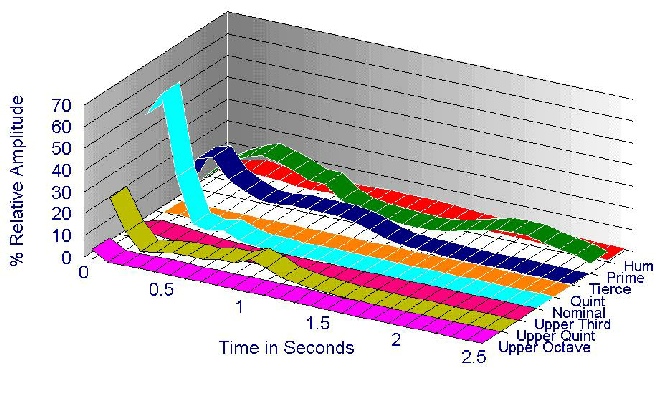


UK Registered Charity Number: 1154107

Conservation by Re-use
Helping churches acquire surplus and/or redundant bells to be hung for
English-style full-circle bell-ringing.


 Index
Previous page
Next page
Index
Previous page
Next page
 Listen to the Bell
Listen to the Bell
Partials of a typical 20th Century Bell
The amplitude-time graphs should be treated with caution. They are suitable for simple comparisons but are not suitable for precise measurements as the relative partial amplitudes and rates of decay are dependent on the recording location and the striking impulse. Ideally comparisons should be made between similar sized bells using the same clapper and impulse level in an anechoic chamber.
Sound of Bells – Simpson’s Hypothesis continued
The figure below shows the amplitude-time graphs for the partials of a typical 20th Century bell. It is interesting comparing this figure with that of a typical 19th Century bell. The improved lathe-tuning process has greatly reduced beats. The Upper Tierce partial has been reduced in amplitude and the Quint partial remains very weak. The Upper Octave has a relatively low amplitude, but this is an advantage as its frequency relationship with the Nominal is not ideal. The initial intensities of the Nominal and Upper Quint are high and as their ratio is the ideal 2:3 it gives a clear Strike Note of similar frequency to the Prime.